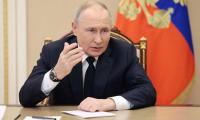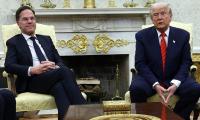On April 12, Sri Lanka defaulted on its external debt. Sri Lanka’s external debt totals $51 billion, $7 billion of which is due for repayment this year. Sri Lanka is passing through its worst economic crisis since gaining independence in 1948. Essentials that are now in short supply include food, fuel, electricity and medicines.
Here’s what went wrong in Sri Lanka: political instability, infrastructure related Chinese debt, a narrow export base, concentration of political power and a decline in international tourism (as tourism accounts for roughly 5 percent of Sri Lanka’s GDP and is a key source of dollars).
In Sri Lanka it all started with 'dwindling foreign exchange reserves and soaring inflation' in-tandem with political infighting. On March 31, hundreds of Sri Lankans stormed the president’s house in “anger over an unprecedented economic crisis”. On April 1, the president declared a state of emergency giving sweeping powers to the military “to arrest and imprison suspects for long periods without trial.” On April 19, Sri Lanka made a request to the IMF for a Rapid Financing Instrument (RFI).
In Pakistan, SBP’s reserves are down to $10.8 billion covering just about 6 weeks of imports and the Sensitive Price Indicator (SPI) is at 16.44 percent. Remember, 'dwindling foreign exchange reserves and soaring inflation'. On top of that our external debt servicing for the following 12 months is estimated at $15.58 billion and a $20 billion current account deficit.
To be certain, Pakistan will not be able to “meet all its current and future payment obligations without exceptional financial assistance or going into default.” How can Pakistan avoid a default? We must make an all-out effort to revive the $6 billion, 39-month funding programme with the IMF-at all cost. This would involve withdrawing fuel subsidies, ending tax amnesty and reducing the development programme by Rs100 billion.
Next; the intra-elite power struggle must only be allowed within the constitutional parameters. The golden rule is: 'Higher growth improves debt dynamics'. Political uncertainty is what is killing our growth potential-and killing our debt repayment capacity.
Next; we must develop-and share-a sustainable debt plan of our entire public and publicly guaranteed debt not only with the IMF but also with China and Saudi Arabia. Next; we must restructure our entire stock of external debt (for which we must enhance our debt management capacity). Next; we must 'reduce payment amounts by extending the payment period and increasing the number of payments.' We must restore debt sustainability.
Next; structural reforms. There’s a bloodbath going on in our so-called Public Sector Enterprises (PSEs). PSEs are taking on additional debt of around Rs700 billion a year plus 'grants' of Rs900 billion a year plus 'subsidies' of Rs200 billion a year. The electricity sector loses Rs1 billion a day, every day of the year. We are letting 126 billion cubic feet of gas evaporate in thin air every year. That is $4 billion worth of gas lost every year.
A default is a "broken promise or breach of contract". According to the IMF, “when a government borrows money from foreign creditors it is contractually obliged to pay the interest on those loans. If a payment is missed, this is described as a default.” Consequences of a sovereign default are what Sri Lanka is experiencing right now: Shortage of food. Shortage of fuel. Shortage of electricity. Shortage of life saving drugs. Social unrest. Street protests.
Opposition leader Omar Ayub joined JIT probe, sources said on Thursday
Residents further said gas supply to some areas, including Rustam Town has been suspended
Meanwhile, heavy firing reported between law enforcement agencies and dacoits







